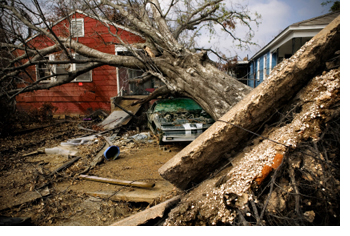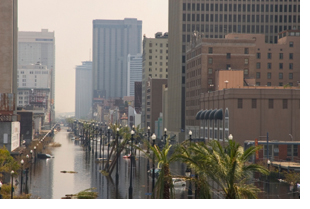 With Irene causing flooding and knocking down trees last month and Lee putting a wet end to Labour Day plans last weekend, one thing is clear: we’re in the middle of hurricane season. In fact, although the season runs from June to November, September is one of the more active months for tropical storm activity. This year has reminded us that Canada’s not immune from hurricane damage?and even remnants from storms long since dissipated can create heavy rains and flooding concerns further north. This week’s links explore hurricane risk and preparedness a little more closely.
With Irene causing flooding and knocking down trees last month and Lee putting a wet end to Labour Day plans last weekend, one thing is clear: we’re in the middle of hurricane season. In fact, although the season runs from June to November, September is one of the more active months for tropical storm activity. This year has reminded us that Canada’s not immune from hurricane damage?and even remnants from storms long since dissipated can create heavy rains and flooding concerns further north. This week’s links explore hurricane risk and preparedness a little more closely.
During hurricane season, the Canadian Hurricane Centre posts radar, warnings, and forecasts on Environment Canada’s Weatheroffice page. If You’re curious about projected paths and the risk to your area, keep an eye on the site for updates.
What’s your area’s hurricane risk? What should you do if You’re under a hurricane watch or warning? How should you prepare for a storm?or for any emergency threat? Canada’s Get Prepared program provides tips, checklists, and facts to help you create emergency kits and put together plans. It’s always better to be prepared!
1954’s Hurricane Hazel is one of the most famous hurricanes to hit Canada, and possibly one of the most surprising. It caused flooding and devastation across southern Ontario, including Toronto, and revealed the need for better flood management and ecological practices. This site was created to mark the 50th anniversary of Hazel’s landfall; check it out for some fascinating facts and an understanding of what can happen when disaster strikes an unprepared metropolitan area.


